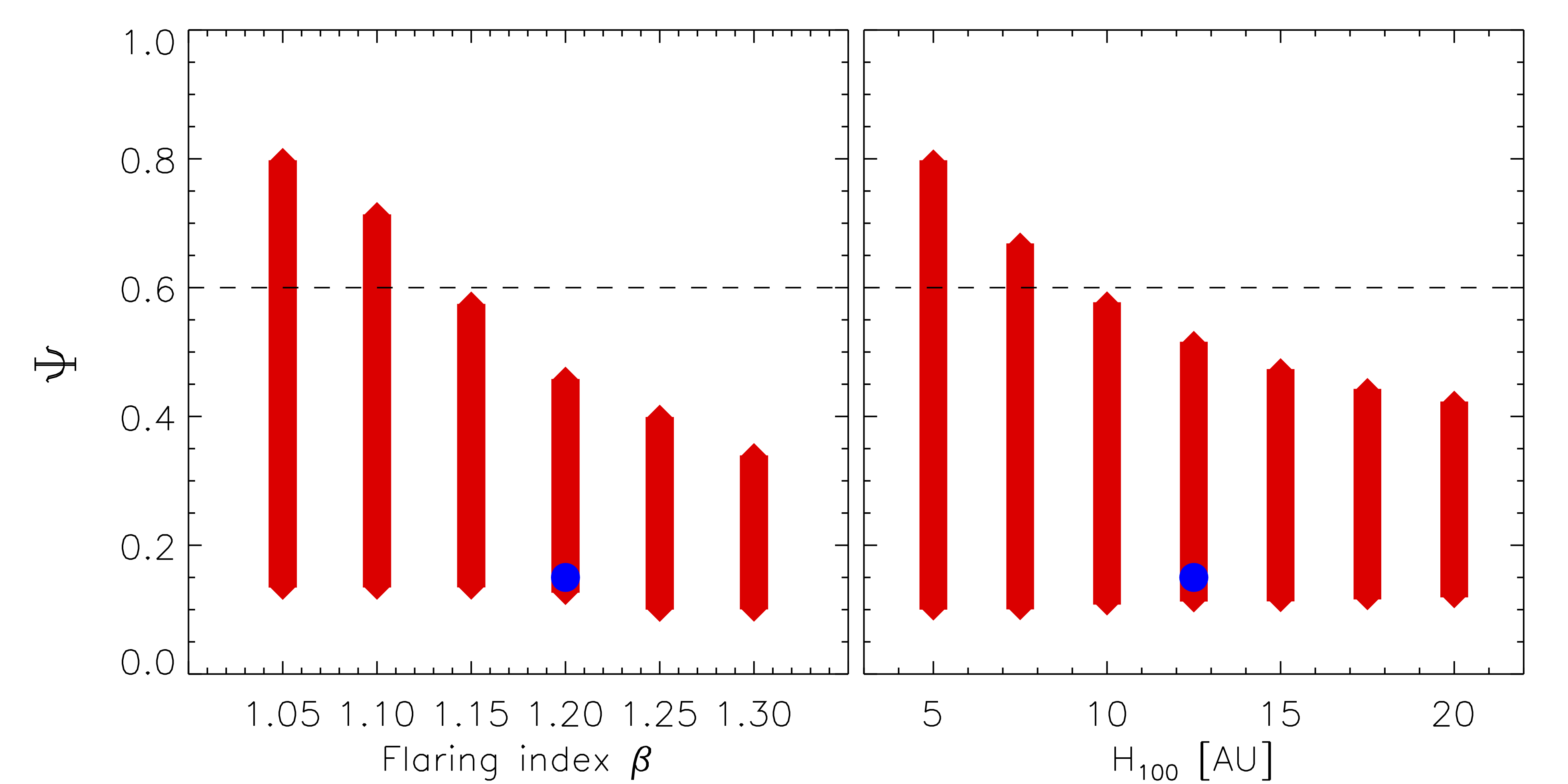Dust growth and settling, as an initial step of planet formation in protoplanetary disks, have an important impact on the appearance of the spectral energy distribution (SED). Selecting a promising sample of disks with signs of these processes helps to guide future observations towards a better understanding of the boundary conditions for planet formation. The ideal method to conduct the sample selection is a thorough radiative transfer modeling of the SED. However, the task becomes difficult when applying this strategy to a large number of objects because of the expensive cost of computational resources.
Using a standard flared disk model, we conducted a large parameter study to investigate the effects of various disk parameters on the overall shape of the SED. We found that the flaring index and scale height can be used to mimic the effect of dust evolution on the SED. Based on a statistic analysis of all the models created in our parameter study, we proposed a criterion of to diagnose signs of dust evolution, where is a ratio defined by dividing a linearly interpolated (between and 1.3mm) flux density at by the observed photometry. In general, increases as the settling of dust proceeds until it approaches to 1, which is the value for a perfectly flat disk. We tested the applicability of our criterion with a large number of class II disks located in the Taurus star formation region. 
By with YAO Rao
Figure 1. The range of as a function of the disk scale height and flaring index . The blue dots mark the position of the fiducial model. The horizontal lines shows , which is the suggested value used to select the promising candidates.
This work is leaded by Dr. Yao Liu, a research assistant in the research group of molecular cloud and star formation at Purple Mountain Observatory. It has been published in Astrophysics and Space Science (2017, Ap&SS, 362, 208), and is supported by the Natural Science Foundation of Jiangsu Province of China and the National Science Foundation of China. Detailed information of the paper can be found at: https://link.springer.com/article/10.1007/s10509-017-3190-0 |
